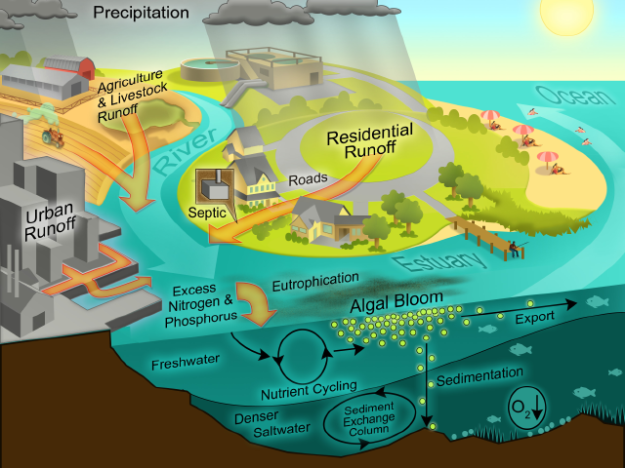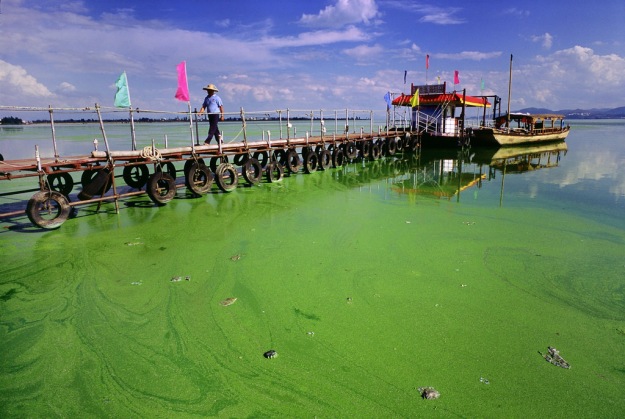By Roberta Attanasio, IEAM Blog Editor
One of the main previsions of climate science is an , which may easily cause flooding and challenge water management. The phenomenon finds its basis in the magnified evaporation caused by warming, resulting in the swelling of water vapor in the atmosphere. In this situation, when it rains, it rains a lot, as there is more vapor available to come down as rainwater. Rainwater may fall not only in large amounts but also in short, localized bursts, too quickly for the ground to absorb it. Sadly, these climate science forecasts are coming true. Although the relationship between global warming and increased precipitation is complex, there are no doubts about the marked increase in intense rainfall events, resulting in severe flooding throughout the United States and globally.

Flooding in Port Arthur, Texas, USA, after Hurricane Harvey (photo taken 31 Aug 2017). Credit: , .
While some effects—such as those caused by Hurricane ’s calamitous rains—are immediately tragic and include rapid loss of lives and disastrous long-term damage, other effects—such as pollution—can be more subtle but just as worrisome. Harvey’s extreme floodwaters are contaminated by lawn pesticides, spilled fuel, and runoff from superfund sites, oil refineries, and chemical plants, with releasing hazardous pollutants.
So, what can we expect in the United States as a consequence of increased rainfall which, although not always extreme, is likely to continue? A published in Science points to expanded pollution of estuarine and coastal ecosystems and subsequent buildup of harmful algal blooms—.

Beach closure at Lake Marion, Kansas. Credit: , .

Dead fish resulting from toxins or oxygen depletion in Lake Binder, Iowa, USA. Credit: , .
Harmful (or toxic) algal blooms are colonies of cyanobacteria, a type of algae that produces cyanotoxins, powerful substances able to kill fish, shellfish, birds, and mammals, and may directly or indirectly cause illness in people. Even nontoxic blooms may hurt the environment and disrupt local and regional economies by reducing recreational activities. As the climate warms, —from eastern China, which has seen some of the largest algae blooms in the world, to the United States. During the few last years, blooms covering almost the entire surface of Lake Utah have raised concerns about the safety of fruits and vegetables irrigated with algae-infested water; cyanotoxins in Lake Erie resulted in nearly 500,000 residents of Toledo, Ohio, losing access to drinking water; and toxic blooms blanketed many Florida beaches, prompting a state of emergency. So, how is the increase in rainfall related to the harmful algal blooms?
Rainfall washes nitrogen, a major nutrient, from agricultural runoff and fossil fuel combustion into waterways. Eutrophication is an increase of nutrients that leads to excessive plant and algae growth, which then consumes and depletes the available oxygen, resulting in the deaths of fish and other aquatic life. Increased precipitation from global warming in turn raises the frequency of harmful algal blooms.

The eutrophication process. Credit: , .
The Science study analyzed the effects of predicted precipitation changes on eutrophication using computer simulations. Results show that if greenhouse gas emissions follow a “business-as-usual” scenario (with no sustained intervention to curb the amount of greenhouse gases released into the atmosphere, and therefore no improvements in current rate of climate change), shifts in future precipitation will lead to significant increases in nitrogen pollution. Regions that may see the most significant increases include the lower Mississippi Atchafalaya River basin, waterways in the Northeast, and the Great Lakes, since they already contain high concentrations of man-made nitrogen and are expected to see an increase in rainfall.
Venkatramani Balaji, one of the study’s authors, : “Nitrogen runoff into rivers must be reduced considerably—more than previously estimated—to maintain the same levels of nitrogen flow into coastal waters as today. While it is now quite widely accepted that shortages of water for drinking or agriculture could be quite disruptive of life in the 21st century, this and other studies show that we must be concerned not just about water quantity, but quality.”

Algae in Dianchi Lake, China (2007). Credit: Greenpeace China, via , .
All hope is not lost, however. The authors of an accompanying appearing in Science (July 2017) conclude that, despite the challenges, successful commercialization of technologies currently in development and the use of increased nitrogen efficiency in agriculture could avoid the introduction of excessive amounts of nitrogen in waterways. In addition, these actions could reduce greenhouse gas emissions while allowing the increased agricultural production that is needed for continuous growth of human populations.
CORRECTION: The original post, published 14 Sep 2017, incorrectly referred to the cited Science article as a Nature article. The sentence has been corrected to reflect “The Science study analyzed the effects of predicted precipitation changes…”

And, another area of emerging research; the possible neurotoxic mechanism of nitration of BMAA toxin to increase the toxicity of BMAA in such bloom sites, needs further work to clarify to what extent N-BMAA is present and how variable it is for risk of exacerbating neurologic diseases, or… possible causative influence.
The above comment ‘nitration’ should read nitrification.
Potjewyd, G, Day, P, Shangula, S, Margison, G & Povey, A 2017, ‘L–N-methylamino-L-alanine (BMAA) nitrosation generates a cytotoxic DNA damaging alkylating agent: An unexplored mechanism for neurodegenerative disease’ NeuroToxicology. DOI: 10.1016/j.neuro.2017.01.007
Toxic algal blooms are usually thought of as detectable visually in the majority of cases, especially in lakes, reservoirs, and very slow moving water bodies. However, there is building concern that many blooms can happen in moving water of streams and rivers without concentrating the masses that would become visible. Drinking water sources from rivers, could often be at risk of some chronic, or acute, exposures without visual clues triggering concern.
Hi Ray, I agree with you. Blooms in streams and rivers should certain be of concern. It looks like algal blooms in Australian rivers release BMAA. BMAA has been found in 70% of the samples! The article by Brendan Main in The Conversation gives a good overview of the situation. Doesn’t look good……
Hello, I am a Fisheries and Wildlife student at Michigan State University and would like to use one of your photos for a literature review. Please email me and we can talk about it more in depth.
Thank you,
Gloria
My email is . Please feel free to reach out to me about using the photo for my literature review.
Gloria
It is important to keep in mind that algal toxins often are accumulative (e.g. BMAA), and can be additive, or even synergistic with, other toxicant contaminants present in the same water (or organism bodies).